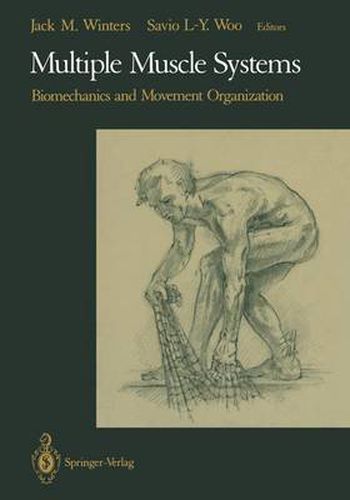Readings Newsletter
Become a Readings Member to make your shopping experience even easier.
Sign in or sign up for free!
You’re not far away from qualifying for FREE standard shipping within Australia
You’ve qualified for FREE standard shipping within Australia
The cart is loading…






This title is printed to order. This book may have been self-published. If so, we cannot guarantee the quality of the content. In the main most books will have gone through the editing process however some may not. We therefore suggest that you be aware of this before ordering this book. If in doubt check either the author or publisher’s details as we are unable to accept any returns unless they are faulty. Please contact us if you have any questions.
The picture on the front cover of this book depicts a young man pulling a fishnet, a task of practical relevance for many centuries. It is a complex task, involving load transmission throughout the body, intricate balance, and eye head-hand coordination. The quest toward understanding how we perform such tasks with skill and grace, often in the presence of unpredictable pertur bations, has a long history. However, despite a history of magnificent sculptures and drawings of the human body which vividly depict muscle ac tivity and interaction, until more recent times our state of knowledge of human movement was rather primitive. During the past century this has changed; we now have developed a considerable database regarding the com position and basic properties of muscle and nerve tissue and the basic causal relations between neural function and biomechanical movement. Over the last few decades we have also seen an increased appreciation of the impor tance of musculoskeletal biomechanics: the neuromotor system must control movement within a world governed by mechanical laws. We have now col lected quantitative data for a wealth of human movements. Our capacity to understand the data we collect has been enhanced by our continually evolving modeling capabilities and by the availability of computational power. What have we learned? This book is designed to help synthesize our current knowledge regarding the role of muscles in human movement. The study of human movement is not a mature discipline.
$9.00 standard shipping within Australia
FREE standard shipping within Australia for orders over $100.00
Express & International shipping calculated at checkout
This title is printed to order. This book may have been self-published. If so, we cannot guarantee the quality of the content. In the main most books will have gone through the editing process however some may not. We therefore suggest that you be aware of this before ordering this book. If in doubt check either the author or publisher’s details as we are unable to accept any returns unless they are faulty. Please contact us if you have any questions.
The picture on the front cover of this book depicts a young man pulling a fishnet, a task of practical relevance for many centuries. It is a complex task, involving load transmission throughout the body, intricate balance, and eye head-hand coordination. The quest toward understanding how we perform such tasks with skill and grace, often in the presence of unpredictable pertur bations, has a long history. However, despite a history of magnificent sculptures and drawings of the human body which vividly depict muscle ac tivity and interaction, until more recent times our state of knowledge of human movement was rather primitive. During the past century this has changed; we now have developed a considerable database regarding the com position and basic properties of muscle and nerve tissue and the basic causal relations between neural function and biomechanical movement. Over the last few decades we have also seen an increased appreciation of the impor tance of musculoskeletal biomechanics: the neuromotor system must control movement within a world governed by mechanical laws. We have now col lected quantitative data for a wealth of human movements. Our capacity to understand the data we collect has been enhanced by our continually evolving modeling capabilities and by the availability of computational power. What have we learned? This book is designed to help synthesize our current knowledge regarding the role of muscles in human movement. The study of human movement is not a mature discipline.